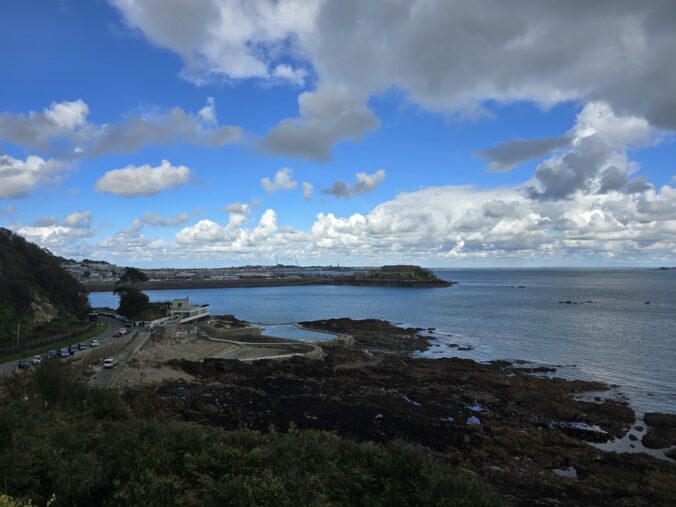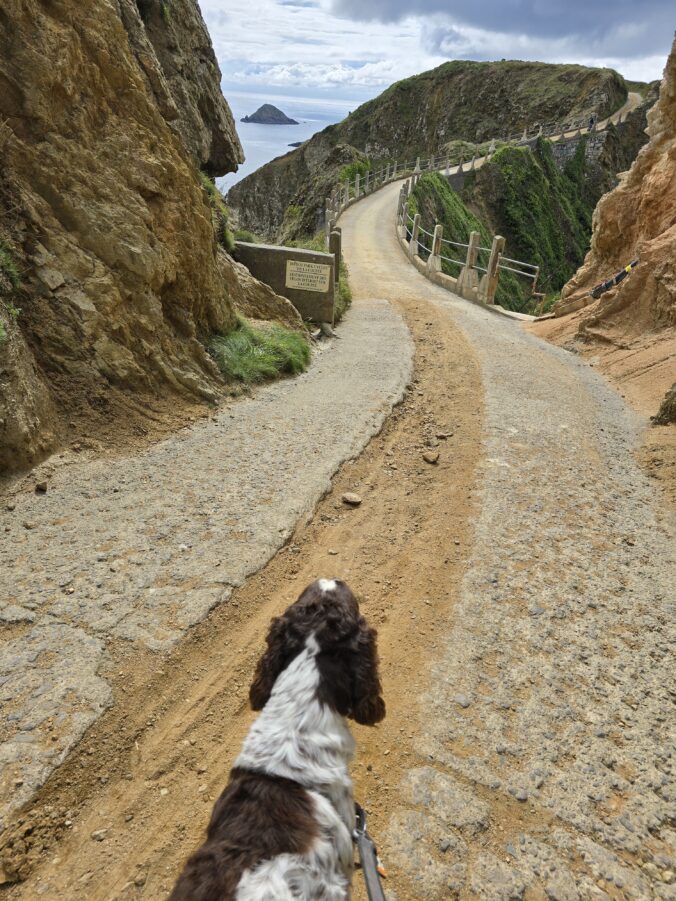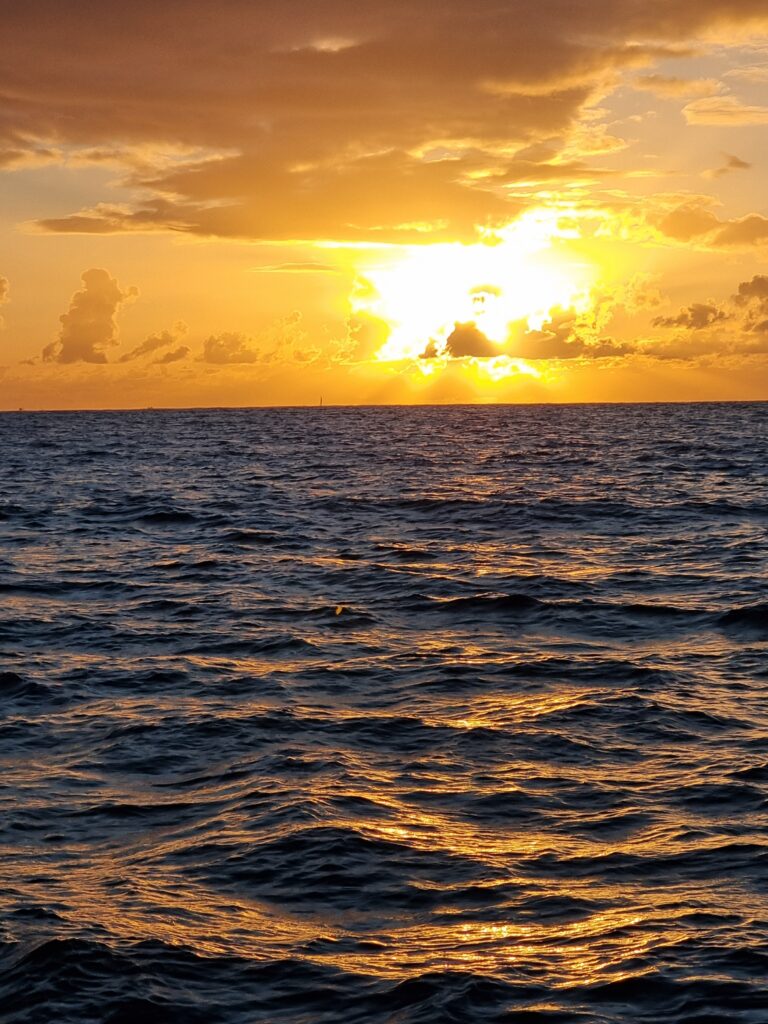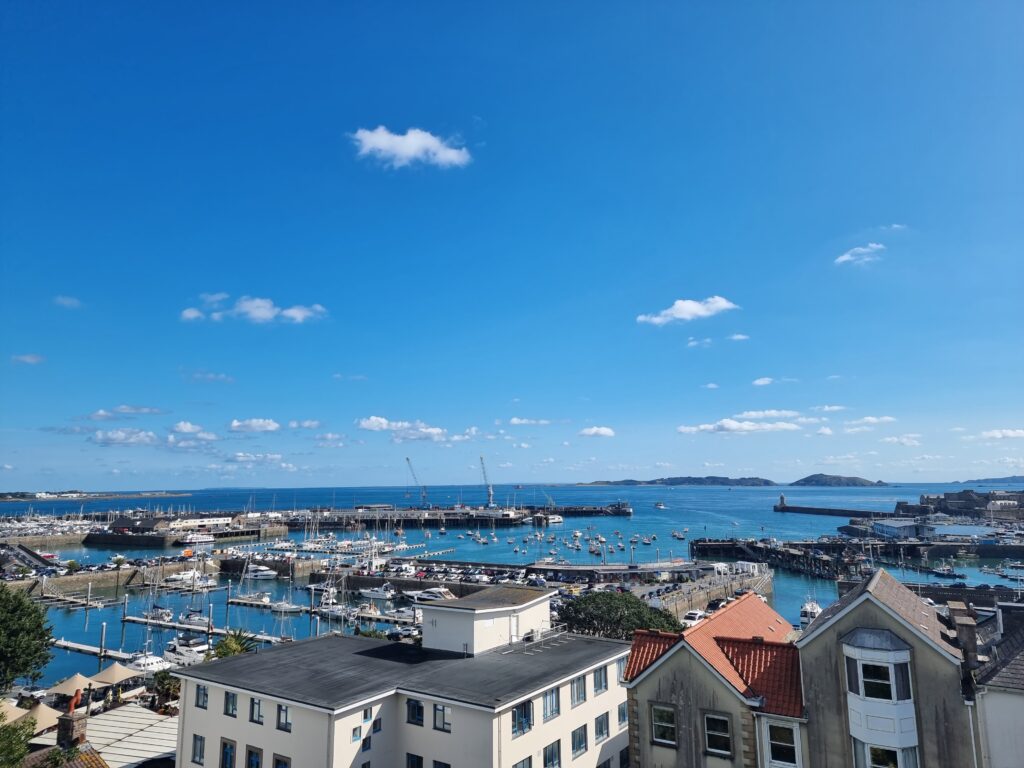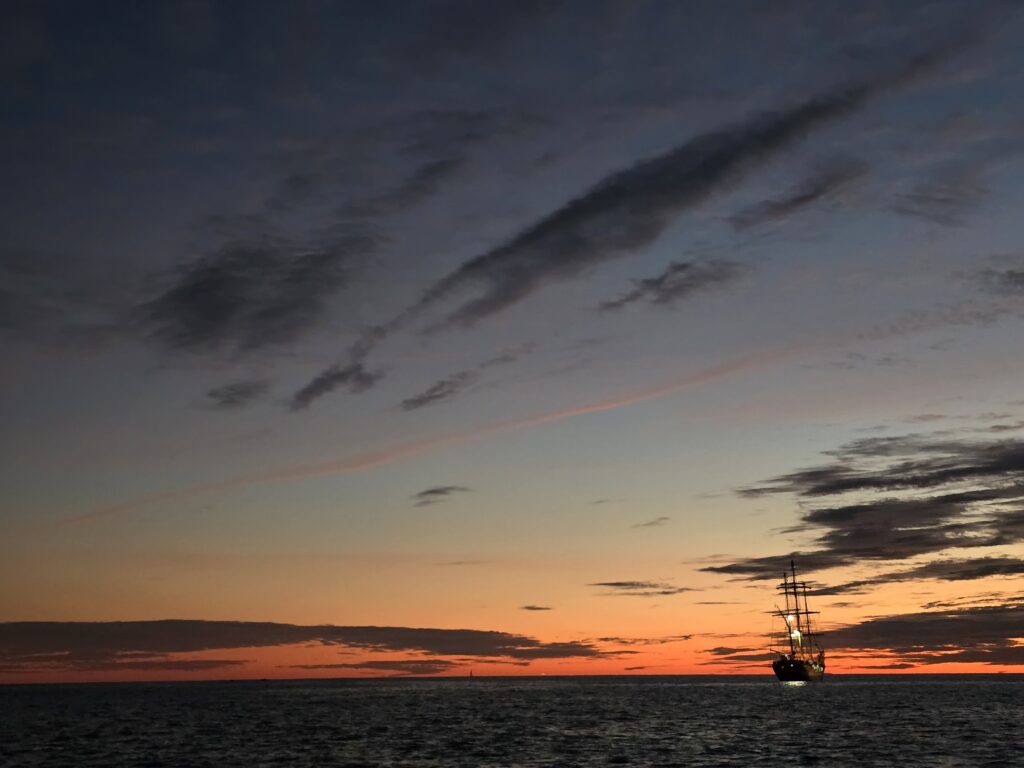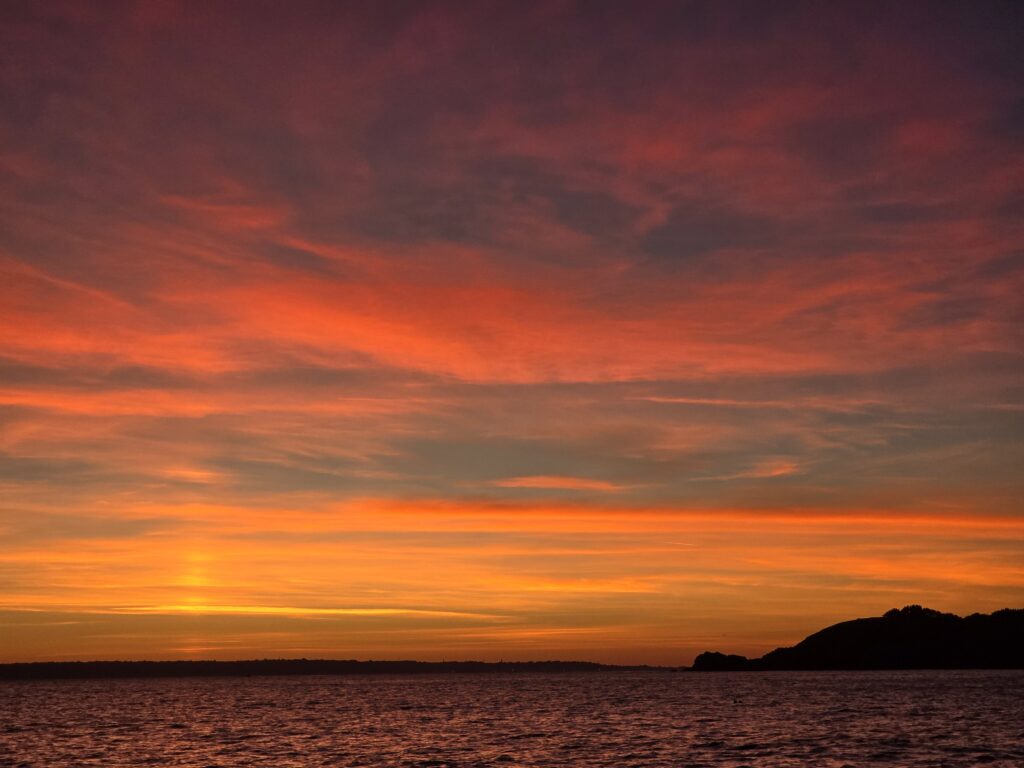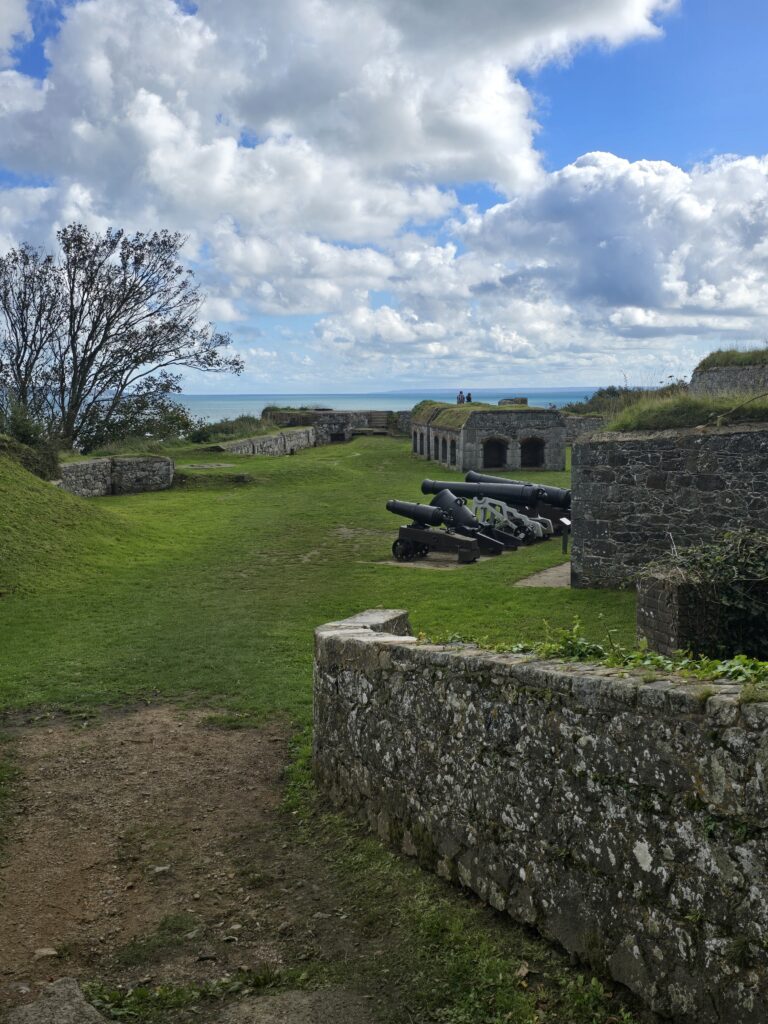A look at the weather showed it would be very quick trip back to UK or perhaps an opportunity to enjoy some harbour time. We decided on the latter.
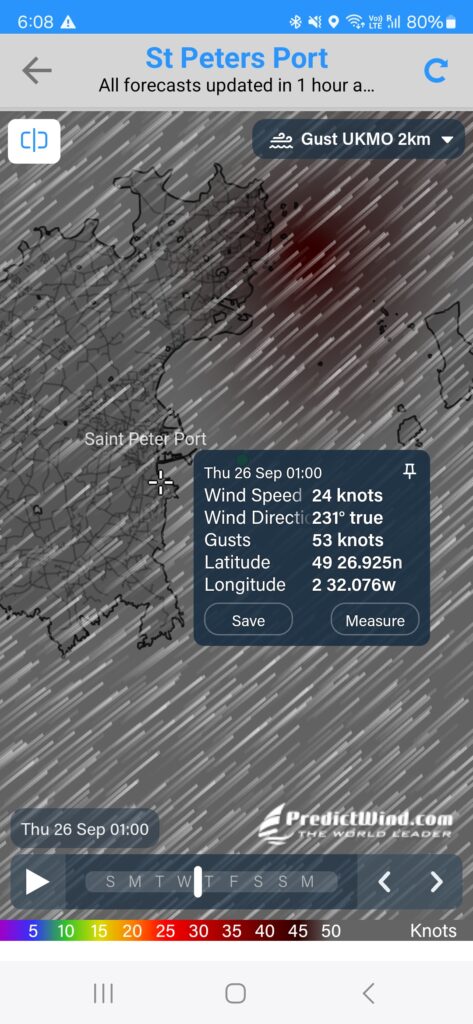
St Peters Port has an inner harbour with a cill that keeps some water in the harbour at low tide. Once the outside water level is below the cill at low tide, any surge in the outer harbour is kept out. But after about half tide the surge comes through the inner harbour, gently swaying vessels to and fro.
Anticipating a bit of surge, we added some extra dock lines and had just settled down with a cup of tea when there was a metal on metal clunk outside. Hmmm. It took just a moment to notice one of the bow dock lines hanging loose and the remains of the cleat on the dock.

No matter there were a few more cleats we could use. The boat was now surging quite violently and the snatch loads on the cleats were becoming significant. Another boat further down the dock broke a stern line and another ripped a cleat out off its deck. Someone else injured themselves on their boat in the violent surge and was off to hospital.
To reduce the snatch loads we decided to put some longer lines with more stretch across the dock to some unused cleats on the far side of the dock. I was just explaining to another owner how we had broken a cleat when another one parted company with the dock, shot past our legs and smashed into the hull with a bullet like impact. ‘Just like that’ I explained.
The situation was becoming a little more serious as we were running out of cleats to hold the bow which was now enjoying some gusts into the forties and snatch loads from the surging. We were upwind of a number of more delicate fibreglass boats that were going to make that horrible crunching sound if we blew into them.
I noticed $2M worth of Leopard catamaran parked at the end of the fairway. Side on it was an unmissable target. If our bow came loose I imagined the force of the wind would break the stern lines in an instant and Away would head straight for the shiny white fibreglass and happily embed its solid aluminium bowsprit into the catamarans exposed hull. Then what? Would the wind twist Away and lever off a large section of gleaming white hull? I remembered those pictures from the blitz with peoples lounge rooms exposed to public view when a bomb ripped the front off a house. Would there be neatly folded PJs and a tidy row of sailing guides ordered by region and size, or a pile of long overdue washing and dishevelled pile of Multihull magazines? Perhaps the chain plates would be weakened by the impact enough for the rig to collapse into the car park surprising the retired couple enjoying their cheese and pickle sandwiches and flask of tea.
More cleats needed and quick. We set about finding additional under utilised cleats around the dock and moving them onto our dock. The ever present risk of being maimed by a low flying cleat made it stressful work.
We slowly added more and more mooring lines (thank goodness we bought more when we wintered in Scotland) and ran them through the cleats on our side, then across the dock over to the further side cleats for extra extra holding.
I was about to remove more cleats when an off duty harbour master came to suggest we didn’t cross the dock with our lines creating a tripping hazard. I decided not to shout at him immediately and instead explained that we were happy to remove the offending lines if he was happy to take responsibility for us turning the other boats into a splintering mess of crushed fiberglass. He asked why we were the only boat breaking cleats. Newtons second law was a long faded memory from high school physics, so I summarised that little wee boats equal little wee force on the cleats, big f**k off cruising boat equals big f**k off forces on the cleats. He must have been happy with the answer because he stopped asking questions and phoned the harbour team to bring more cleats.
Meanwhile, we had broken another cleat, and Fi was standing there ropes and a threatening cleat in her hands trying to stop it from scratching up her nicely patched hull wrapping.
About three hours after the surge started the harbour team turned up with extra cleats after the boss man had gone up there and directed. Fi had been up there twice already asking for more cleats, explaining that we were slowing shearing through their current ones. This didn’t seem to register with them, and we can only put it down to Fi being as cool as a cucumber, or the “salty proper sailing dudes” thinking she was overreacting.
We replaced the four broken ones, added numerous more and secured the now fourteen dock lines to multiple cleats each to reduce the loads on a single cleat.

Six hours later, the tide had dropped and the cill was doing its work, stopping the massive surge. Dinner, and a sleep.
The next day we took a closer look at the dock and what had failed. The first cleats had sheared off under the snatch loads. A retired Rolls Royce engineer on the dock told us they were cast aluminium with significant cavities that were destined to fail under load. Cheap and nasty were his words.
The dock also used a rail system for the cleats that had allowed us to easily move the cleats from other parts of the dock. In some cases one end of the cleat had ripped out of the dock and then twisted and snapped the other end off. In other cases, as we surged backwards and forwards, the cleats simply moved on the rails, backwards and forwards in time with us. Not particularly secure.

Compare these to more solid cleats that we see on most docks in this region.

Sometimes it seems like cruising is a journey of dispelling assumptions (‘people offering to take lines on the dock know how to tie off a line’, ‘mooring buoys are safe to moor on’). We used to assume cleats were strong enough to tie on to. Not now. We have officially become ‘cleatist’.
Before the next blow is due, we decided to grab another weather window for our next destination.
